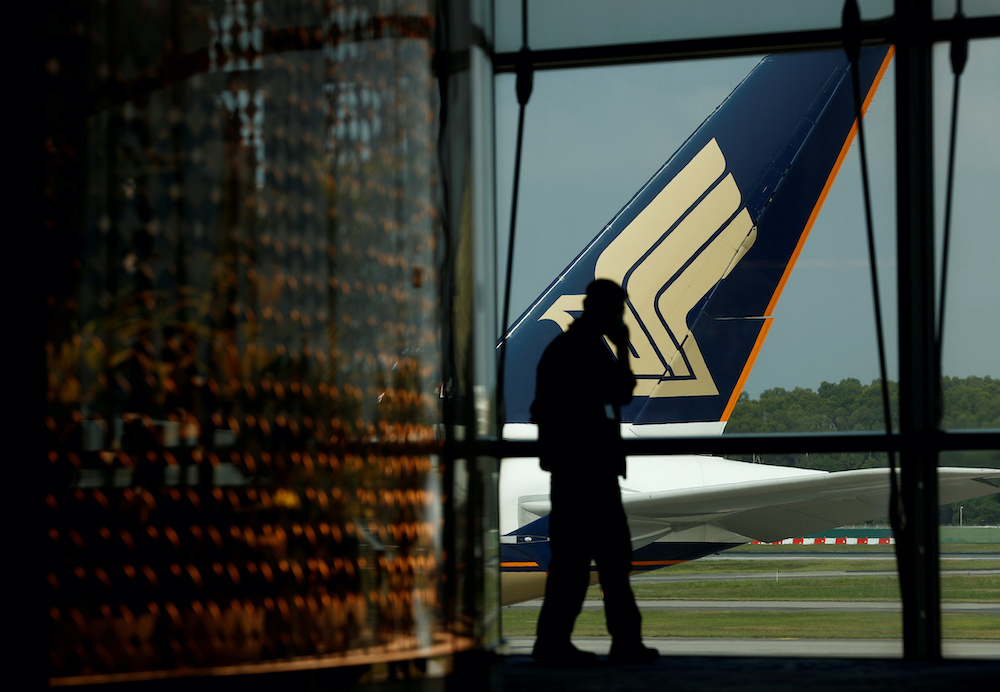SINGAPORE, Oct 6 — Once a bustling hub, Changi Airport was the seventh busiest airport in the world before the Covid-19 pandemic ravaged air travel. Today, it has dropped to 58th place.
And were it not for its recent recapitalisation exercise, national carrier Singapore Airlines (SIA) would not exist today, Transport Minister Ong Ye Kung said today in a ministerial statement in Parliament on the recovery of the aviation sector.
Even with the measures taken, the airline is still “far from being out of the woods”, Ong said, as he pledged to revive Singapore’s air hub as a top national priority and do “as much as we can” to support SIA, the airport and other aviation businesses.
Covid-19 has cut a deadly economic swathe around the world, bringing air travel to a near-standstill, even though borders are slowly reopening in parts of the world.
The two icons of Singapore’s aviation sector — Changi Airport Group (CAG) and SIA — have not been spared and are facing a deep crisis, said Ong.
There are now direct flights from Singapore to just 49 cities, compared with 160 before the pandemic, Ong said.
At present, Changi Airport Terminal 1 is also seeing fewer passengers than when it opened in 1981, said Ong.
Changi Airport is serving just 1.5 per cent of its usual passenger volume and 6 per cent of its typical number of passenger flights.
If the number of cargo flights are added to the mix, Changi Airport fares slightly better — at 17 per cent of its total flight volumes.
Ong said that cargo flights are operating at more than two and half times their regular frequency, which has partially offset the reduction in passenger flights.
CAG’s revenue losses
As a result of lower passenger volumes and fewer flights, CAG has lost its revenue streams, Ong said.
The amount of service charges it is collecting from airlines and passengers is now miniscule.
Shops and restaurants at the airport are also serving far fewer customers, and many stores have shut. CAG is also dipping into its reserves, and preserving cash and retaining core capabilities, said Ong.
He added that the government will continue to support SIA, CAG and other companies in the aviation sector “as much as we can”.
Among the slew of measures to prop up the sector is the Jobs Support Scheme, which provides employers with wage support to help them retain Singapore employees. The hard-hit aviation sector benefits from the highest tier of support.
The government has also provided cost relief through the Enhanced Aviation Support Package, under which an extra S$187 million will be injected into the ailing industry.
The package, originally totalling S$350 million, was announced in March to fund measures such as rebates on aircraft landing and parking charges, and rental relief for airlines, ground handlers and cargo agents.
“But the most meaningful support we can give to our aviation companies is to restore passenger traffic and revive our air hub, in a controlled and safe manner,” said Ong.
SIA doing its best to stay afloat
Turning to Singapore’s national carrier, Ong noted that there would “not be an SIA today” without its recent major recapitalisation exercise.
Last month, the SIA Group announced that it would be laying off about 2,400 workers across SIA, its regional arm SilkAir and budget carrier Scoot.
But Ong revealed on Tuesday that a recently concluded agreement between SIA and its pilots’ union, for pilots to take deeper pay cuts, enabled the airline to trim the number of retrenchments from 2,400 to 2,000.
A further 1,900 jobs across the group had been cut through vacancies that were not filled, early retirement of employees and a voluntary release scheme.
But the airline is far from being out of the woods, Ong said.
“It is trying its best to reduce cash burn, preserve core capabilities, and explore all ways to generate revenue,” he said.
In the quarter that ended on June 30, SIA recorded its biggest-ever quarterly loss on record (S$1.12 billion) due to lower travel demand brought about by travel restrictions.
In an effort to create new experiences for its customers here as flights are grounded, SIA last month announced a suite of offerings, including dining on board its Airbus A380 and tours of its training facilities.
But it jettisoned an initial idea for a short tour flight, or a “flight to nowhere”, after the airline carried out a market study and a review, taking into account factors such as environmental implications and financial viability. — TODAY






















